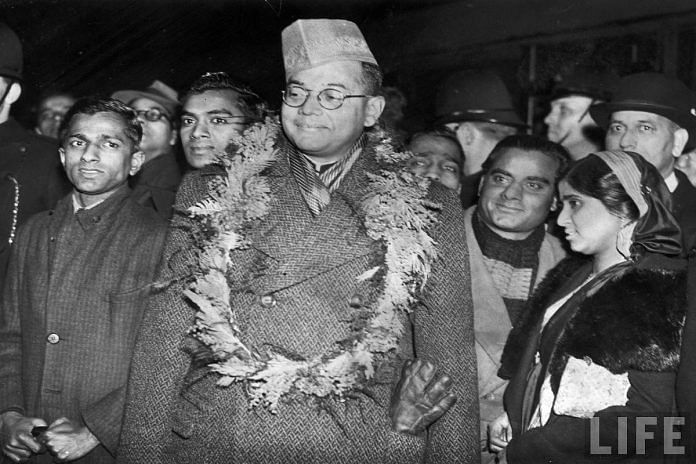Eleven different official and unofficial investigations show that Subhas Chandra Bose died after the air crash while in a military hospital in Taiwan.
It is really for others to comment on my book; not for me to talk about it. That said, it may surprise people that Laid To Rest: The Controversy Over Subhas Chandra Bose’s Death assembles 11 different official and unofficial investigations into what happened to one of the heroes of the Indian freedom movement, for most of them are unknown to the general public.
More importantly, each and every one of these inquiries reached the conclusion that Bose died as a result of a plane crash at Taipei on 18 August 1945.
The final Japanese government report on the subject, which I was given sight of in 1995, and had been pressing the Indian government to declassify ever since, was finally made public by Tokyo in September 2016, 60 years after it was submitted to Delhi.
The ad interim report of Japanese authorities, submitted four weeks after Bose’s demise, also came to light as late as in 2016, through the efforts of the late Govind Talwalkar, a legendary former editor of Maharashtra Times, who kindly forwarded the document to me.
In 1966, Yomiuri Shimbun, Japan’s largest circulated daily, embarked on a monumental project to catalogue the events of the Second World War. It devoted a significant chapter to Bose. But it was not until 1996 that an English translation of this invaluable inquest became accessible. While the British, of course, approved a plan to assassinate Bose, they have been wrongly maligned by a section of Bose worshippers for having allegedly played a diabolical role after the Second World War.
Indeed, a letter was clumsily forged to suggest Prime Minister Jawaharlal Nehru had written to his British counterpart Clement Attlee to ask him to do what he considered to be “proper and fit” about Bose’s presence in the Soviet Union.
The fact is, as my book elaborates with evidence, he never entered the USSR in or after 1945. It was undoubtedly Bose’s intention to do so. In his hopping flight, the halt after Taipei would, in fact, have been Dairen in Manchuria, from where he had a tentative plan to slip away into Siberia. But he never made it there, since the Japanese bomber carrying him crashed in the Taiwanese capital and he passed away the same night at a military hospital.
The British carried out three separate probes to ascertain and establish the facts, including interrogating three survivors of the crash – Bose’s aide de camp Colonel Habibur Rehman, Lieutenant Col Shiro Nonogaki and Lieutenant Col Tadeo Sakai and the doctor who principally treated Bose at the hospital Dr Toyoshi Tsuruta.
It is also not much advertised that Taipei authorities, too examined the matter at Britain’s request – for there were no diplomatic relations between India and Taiwan. This, too, unearthed recollections from officials at the bureau responsible for issuing cremation certificates and the crematorium where the last rites were performed.
A member of our journalistic fraternity deserves recognition. In 1946, Harin Shah, of the Free Press Journal, visited Taipei and interviewed Tsan Pi Sha, who nursed Bose during the hours he unsuccessfully battled for life at the hospital, among other key witnesses.
As my preface – which I call raison d’etre – explains the controversy that has governed Bose’s tragic end would probably have been nipped in the bud if Bose’s elder brother Sarat Bose, a prime arbiter in the matter, not died prematurely in 1950. Had he, an incisive barrister, undertaken a trip to Taipei and Tokyo, he would certainly have been convinced about the story of the crash.
The issue could also have been resolved if personal ties between Sarat and Nehru had not deteriorated. The lack of communication between the two meant the Japanese ad interim report and the three British investigations were apparently not shared with Sarat, despite him being briefly a cabinet minister in the interim government formed in 1946.
First-hand accounts by six survivors of the crash, descriptions of those who treated him at the hospital or were by his bedside when he breathed his last, organised or attended the cremation, the impressions of the Japanese officer who hand-carried the mortal remains from Taipei to Tokyo, and of a young Sikh later to become an Air India executive who performed this duty through the streets of Tokyo to the Renkoji temple (where they are preserved till date) for a funeral service on 18 August 1945 are some of the innumerable depositions under oath.
But don’t take my word for it. Read the book and the documents and judge the truth for yourself.
Ashis Ray is an Indian foreign correspondent and the author of ‘Laid To Rest: The Controversy Over Subhas Chandra Bose’s Death’, published by Roli Books.




Let there be a DNA test of Bone Ashes of Subhas Babu preserved at Renkoji temple. It will clear all the doubts once for all.
I reject any form of documentative or archival evidence.
Only whatsapp forwards of the vedic variety will inform my stand.
As a bhakTARD, I reject any form of evidence.
Only whatsapp forwards of the vedic variety will inform my stand.